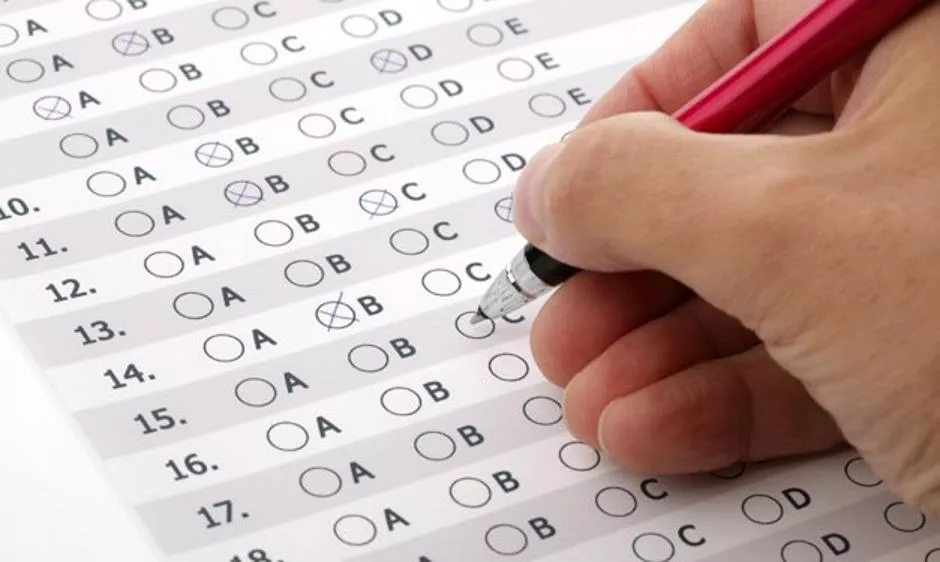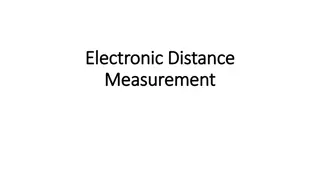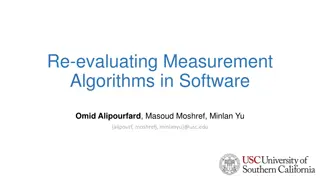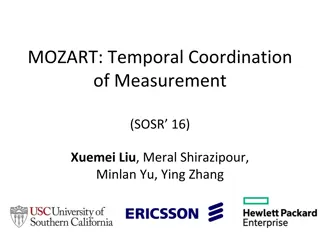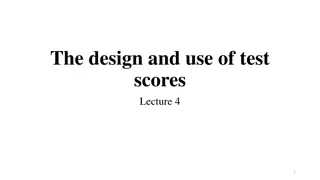Understanding Item Response Theory in Measurement Models
Item Response Theory (IRT) is a statistical measurement model used to describe the relationship between responses on a given item and the underlying trait being measured. It allows for indirectly measuring unobservable variables using indicators and provides advantages such as independent ability estimation and detailed diagnostic information. IRT finds applications in educational, psychological, and health measurements, as well as market research and surveys. Commonly used IRT models include Rasch Models, Logistic Models, and Graded Response Models.
- Measurement Models
- Item Response Theory
- Statistical Analysis
- Educational Assessment
- Psychological Measurement
Download Presentation

Please find below an Image/Link to download the presentation.
The content on the website is provided AS IS for your information and personal use only. It may not be sold, licensed, or shared on other websites without obtaining consent from the author. Download presentation by click this link. If you encounter any issues during the download, it is possible that the publisher has removed the file from their server.
E N D
Presentation Transcript
Item Response Theory in Henrik Galligani R der Doctoral Research Fellow
How would you measure height, if you couldn t observe it? Something that can t be measured directly might still be measureable indirectly. Using indicators, we can use the commonality of the indicators to measure the unobservable variable we aim to measure. Check out the measure yourself
Outline Item Response Theory Comparing test results Fair comparison In case you missed it: Height questionnaire
What is Item Response Theory? Item Response Theory (IRT) is a family of statistical measurement models. These models aims to describe the relationship between a persons response on a given item and the underlying trait the item is used to measure. In case you missed it: Height questionnaire
IRT advantages Ability estimation is item independent given a sufficient item pool. Measurement error provided conditioned on the latent trait level. More detailed diagnostic information. More flexible when comparing different measures. +++
Where is IRT used? Educational Measurement Psychological Measurement Health Measurement Market research Surveys Cognitive diagnosis
IRT in education International Large Scale Assessments (ILSAs) OECD PISA PIAAC +++ IEA TIMSS PIRLS +++ +++ National testing systems National Pr ver ACT/SAT +++ +++
Most commonly used IRT models Most common: Rasch Models 2/3 Parameter Logstic Models Used for dichotomous items, such as true/false, correct/incorrect. (Generalized) Partial Credit Models Graded Response Model Rating Scale Model Used for polytomous items, such as Likert scale, partial credit items or other ordinal responses.
Likert scale Sum score is often used to summarize scores on questionnaires using Likert Scales. What is the distance on a latent trait continuum between response options? A: 1. Strongly Disagree 2. Disagree 3. Agree 4. Strongly Agree Vs. C: 1. Disagree 2. Somewhat Disagree 3. Neither agree or disagree 4. Somewhat Agree 5. Agree B: 1. Disagree 2. Somewhat Disagree 3. Somewhat Agree 4. Agree
Other types of IRT models Multidimensional models: Reckase, M. D. (2009). Multidimensional item response theory models. Springer, New York, NY. Explanatory models: De Boeck, P., & Wilson, M. (2004). Explanatory item response models: A generalized linear and nonlinear approach. Springer Science & Business Media. And many more: van der Linden, Wim J., ed. Handbook of Item Response Theory: Volume 1: Models. CRC Press, 2016.
3-Parameter logistic model (3PL) ?? ?? 1 ?? ??? = 1 ?,??,??,?? = ??+ 1 + ? ??? ?? ?? ? - ability level. ??- discrimination of item ?. ??- difficulty of item ?. ??- guessing parameter of item ?. R-code to open interactive display for item plots using the shiny interface: ### Packages library(mirt) library(shiny) ### Shiny display itemplot(shiny = T) *Notation as used in the documentation of the package mirt
Modelling height using Item Response Theory IRT package used: {mirt} multidimensional item response theory Data used: Questionnaire measuring height: 14 dichotomous items 252 complete observations Self-reported height Height questionnaire
IRT vs CTT thought experiment Item 1 Item 2 Item 3 Item 4 Item 5 Item 6 Item 7 Sum Student A 1 Student B 3 Student C 5 Student D 7
IRT vs CTT thought experiment Item 1 Item 2 Item 3 Item 4 Item 5 Item 6 Item 7 Sum Student A 1 Student B 3 Student C 4 Student D 5
What is required to use IRT? Sample size larger than at least 100 depending on models used. Preferably more. Computational power. Note: The more complex the model is, the larger the sample needs to be for stable parameters.
IRT also builds on a few assumptions A single construct is measured.* Local Independence Correct type of response function. *Not counting multidimensional models.
Comparing test results Test equating How can we compare the results on different tests? ? =
Types of test linking Kolen, Michael J., and Robert L. Brennan. Test equating: Methods and practices. Springer Science & Business Media, 2013. p 499.
There are multiple methods, but concurrent calibration is one of the simplest to implement Necessary with something shared, such as: Some student s taking multiple tests Some items being shared between test-forms
Typical implementations Common Item Equivalent Groups Anchor test/Scale Test Or a combination, like the popular non-equivalent groups with Anchor test design (NEAT) Kolen, Michael J., and Robert L. Brennan. Test equating: Methods and practices. Springer Science & Business Media, 2013.
Test equating Practical example Ordinary implementation of Nasjonale Pr ver i regning
Test equating Practical example Extended data collection to connect grade 5 and 8
Test equating Practical example Data structure: One group. Two tests, three item blocks. NT5 Gr. 2 shared (23 items).
Does the tests compared test the same thing? Parallel analysis Binary data requires a modified approach Multidimensional models Bifactor Correlated simple structure ++ ++
Test Fairness Differential Item Functioning An item, and by extension, a test, might measure differently, depending on the group tested.
There are many ways to investigate if an item is invariant across different groups. Mantel-Haenszel Wald statistic Random-Effects Models Logistic Regression Method Likelihood-ratio test ++ [Go to picture folder]
Differential Item Functioning Practical example Data structure: Two groups. One test.
Consequence of differential item functioning Unfair comparisons between students Systematic disenfranchisement of a minority
Dealing with differential item functioning 1. Ignore items 2. Allow items to estimate freely across groups
Thank you! Modern Psychometrics with R For R novices familiar with IRT Using R for Item Response Theory Model Application For R and IRT novices For more information about the linking of the Norwegian national numeracy tests, see the QR code (report in Norwegian)


